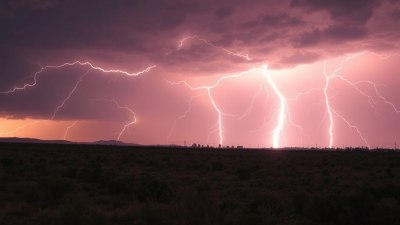The Clouds That Glow Why Night Shines with Noctilucent Wonders
Explore the mesmerizing noctilucent clouds and their enchanting glow in the night sky.

Noctilucent clouds, or night-shining clouds, are a fascinating phenomenon that ignites the imagination of astronomers and the public alike. These ethereal, wispy formations represent the highest clouds in the Earth's atmosphere, typically found in the mesosphere at altitudes of 76 to 85 kilometers (47 to 53 miles) above the Earth’s surface. Characterized by their glowing appearance just after sunset or just before sunrise, noctilucent clouds provide a stunning visual display that captivates all who gaze upon them. This article delves into the science behind these luminous clouds, their formation, and the conditions that allow them to shine so brilliantly against the twilight sky.
To understand noctilucent clouds better, it is essential to recognize their unique role within the Earth’s atmosphere. They are composed primarily of ice crystals that form when water vapor in the upper atmosphere meets extremely low temperatures. These temperatures enable the water vapor to crystallize, creating delicate and intricate patterns that catch the rays of the sun. The phenomenon is richer in summer months but can occur from late spring to early autumn, making them more visible in specific geographic areas among higher latitudes.
One of the key conditions for the formation of noctilucent clouds is the presence of atmospheric waves. These waves typically originate from weather patterns and can lift the moist air to the mesosphere, where the temperatures are frigid. The cooling of this moist air leads to the condensation of water vapor, which freezes into tiny ice crystals, ultimately resulting in the ethereal displays that observers marvel at.
Interestingly, noctilucent clouds have recently garnered attention due to their potential implications in understanding climate change. Observations reveal that the presence and prevalence of these clouds may be affected by the warming of the Earth's lower atmosphere. As global temperatures rise, more water vapor may be present in the upper atmosphere, potentially leading to an increase in noctilucent phenomena. This connection between these clouds and climate patterns provides researchers with a unique opportunity to study atmospheric changes that can help refine models of climate change.
Global Observations of Noctilucent Clouds
Noctilucent clouds have been primarily observed in high-latitude regions such as North America, Europe, and parts of Asia. However, the increase in sightings around the globe indicates that these clouds are certainly not confined to historical boundaries. Observatories and amateur astronomers have documented their beauty, often using complementary technologies such as satellites and ground-based sensors. The NASA AIM (Aeronomy of Ice in the Mesosphere) satellite has been vital in enhancing our understanding of noctilucent clouds, providing critical data on their occurrence and the intricate conditions that contribute to their formation.
The exquisite coloration of noctilucent clouds is another fascinating aspect that draws attention. They tend to take on a spectral palette of blues, silvers, and whites that glisten under the warm light of the sun, reflecting off the tiny ice crystals. The sun's angle during twilight plays a critical role in the intensity of their glow. As twilight descends, and the sun sinks beneath the horizon, its rays can illuminate these high-altitude clouds while the lower atmosphere falls into darkness, creating a striking contrast between the bright clouds and the shadowy landscape.
Observing Noctilucent Clouds
For those wishing to witness these ephemeral clouds, timing and location are pivotal. The best opportunities exist during the summer months, particularly during the solstice when nights are shortest. Observers at higher latitudes—typically above 50° N or S—are more likely to witness noctilucent clouds due to the positioning of the sun. Ideal observation conditions involve clear skies, a low horizon, and the optimal timing just before dawn or after sunset.
When trying to view noctilucent clouds, it may be beneficial to check local sky conditions and forecasts. Various astronomy websites and apps provide information about celestial events and phenomena, allowing enthusiasts to stay informed about the occurrences of noctilucent clouds. Some regions have even organized community events during peak viewing seasons, enabling people to congregate and share the awe of the night sky.
The Cultural Significance of Noctilucent Clouds
Noctilucent clouds have far-reaching implications beyond the realms of scientific inquiry. Throughout history, various cultures have imbued these clouds with mythological and symbolic significance. In many indigenous cultures, noctilucent clouds are seen as omens or messages from the divine. They are often depicted in art and literature, inspiring poets and writers with their beauty and mystery.
In modern times, these clouds also serve as a reminder of the delicate balance of our environment and the importance of maintaining it. Their presence is indicative of the processes happening high in the atmosphere, which are inextricably linked to the conditions we face on the ground. As we seek to understand atmospheric sciences and climate shifts, noctilucent clouds remain an awe-inspiring subject that connects the scientific community with art and culture, as they are an exquisite blend of nature's process and human perception.
The Scientific Journey into Understanding
Research on noctilucent clouds is continuously evolving. Scientists employ various tools, including ground-based and satellite observations, to deepen their understanding of these clouds. The AIM mission, launched in 2006, has enabled scientists to study their formation processes, interactions with other atmospheric components, and their role within the larger climate system.
One of the intriguing aspects of this research is the study of the effects of debris from meteor showers on noctilucent cloud formation. When meteoroids enter the atmosphere and burn up, they create a trail of dust that can contribute to the nucleation process of ice crystals in the mesosphere. This relationship opens new avenues for research, as scientists delve into the interconnected nature of various atmospheric phenomena.
The allure of noctilucent clouds lies not only in their extraordinary beauty but also in their capacity to serve as a lens through which to examine our changing world. From their scientific intricacies and implications for climate change to the cultural stories they inspire, noctilucent clouds capture our fascination with the natural world. Observing these glowing formations in the night sky invites us to reflect on the mysteries of the atmospheric processes and the delicate balance sustaining life on Earth. Whether viewed as a scientific marvel or an artistic inspiration, noctilucent clouds remain a testament to the splendor of our planet and the universe beyond.











